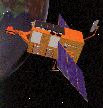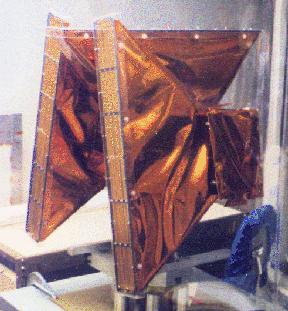
The Rossi X-ray Timing Explorer

The Rossi X-ray Timing Explorer
The mission carries two pointed instruments, the Proportional Counter Array (PCA) developed by GSFC to cover the lower part of the energy range, and the High Energy X-ray Timing Experiment (HEXTE) developed by UCSD covering the the upper energy range. These instruments are equipped with collimators yielding a FWHM of one degree.
 MIT is
providing an All-Sky Monitor (ASM) that will scan about 80% of the sky
every orbit, allowing monitoring at time scales of 90 minutes or
longer, and an on board Experiment Data System (EDS) which processes
the data from PCA and ASM. (see below for technical information and
the current status of these instruments) The ASM will observe the
brightest known X-ray sources for variability and also alert the
community when new sources appear.
MIT is
providing an All-Sky Monitor (ASM) that will scan about 80% of the sky
every orbit, allowing monitoring at time scales of 90 minutes or
longer, and an on board Experiment Data System (EDS) which processes
the data from PCA and ASM. (see below for technical information and
the current status of these instruments) The ASM will observe the
brightest known X-ray sources for variability and also alert the
community when new sources appear.
There is a quick tour of the spacecraft available.
For a broad overview of the mission, please read our brochure:
The Science Operations Center at NASA's Goddard Space Flight Center will manage the mission science operations. More information about the spacecraft and the instruments can be had from NASA HEASARC. The Guest Obeserver Facility contains useful information about doing science with RXTE.